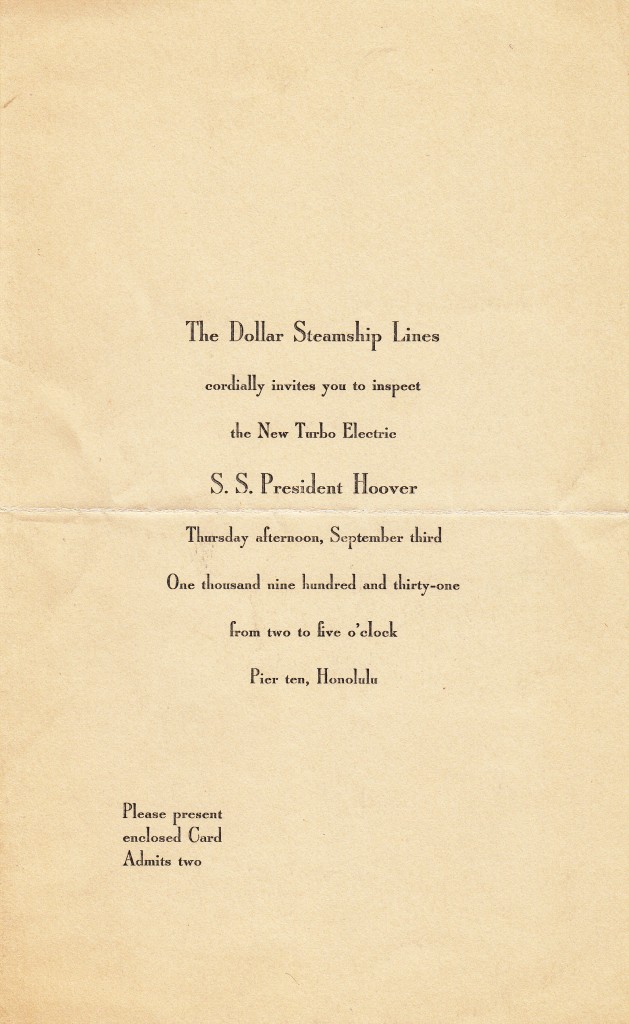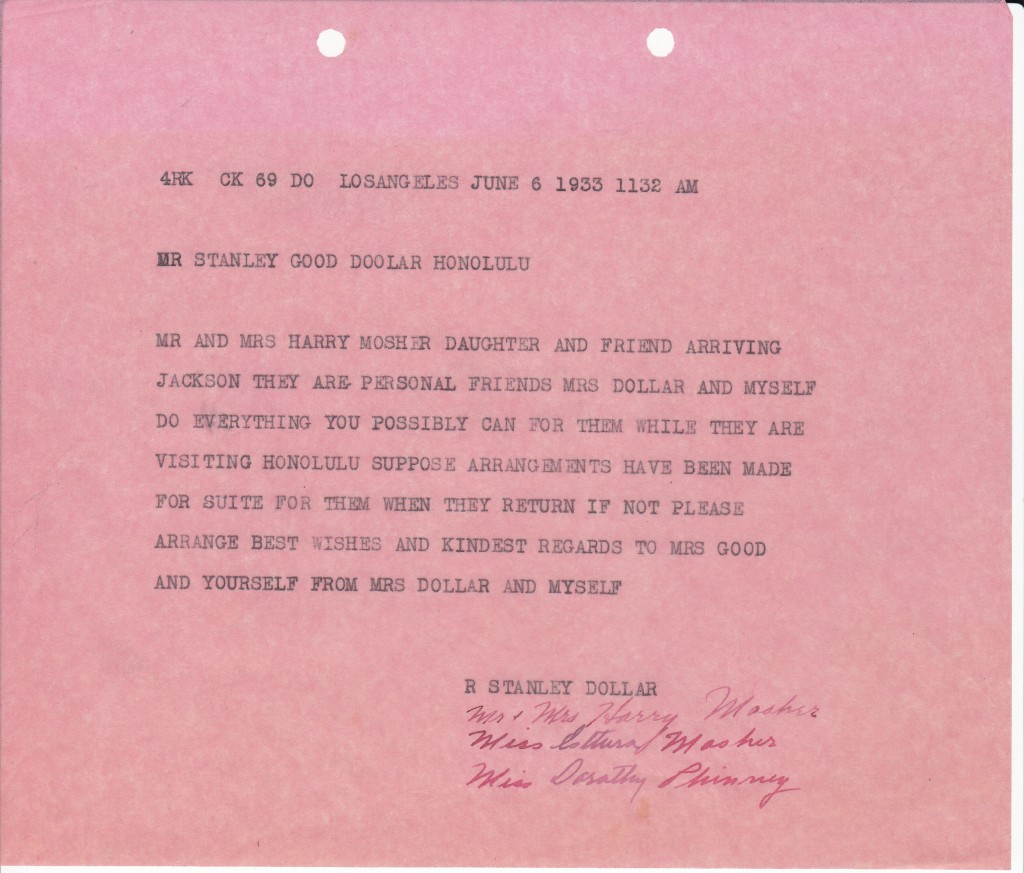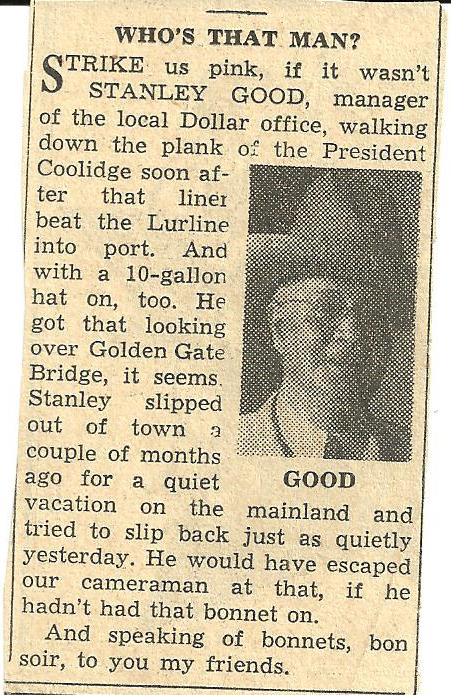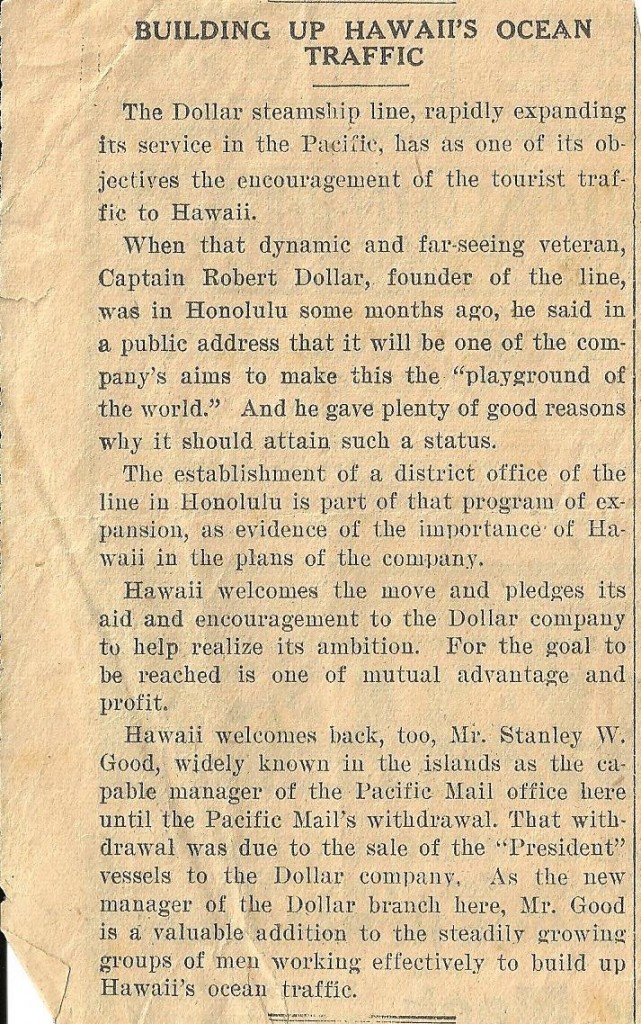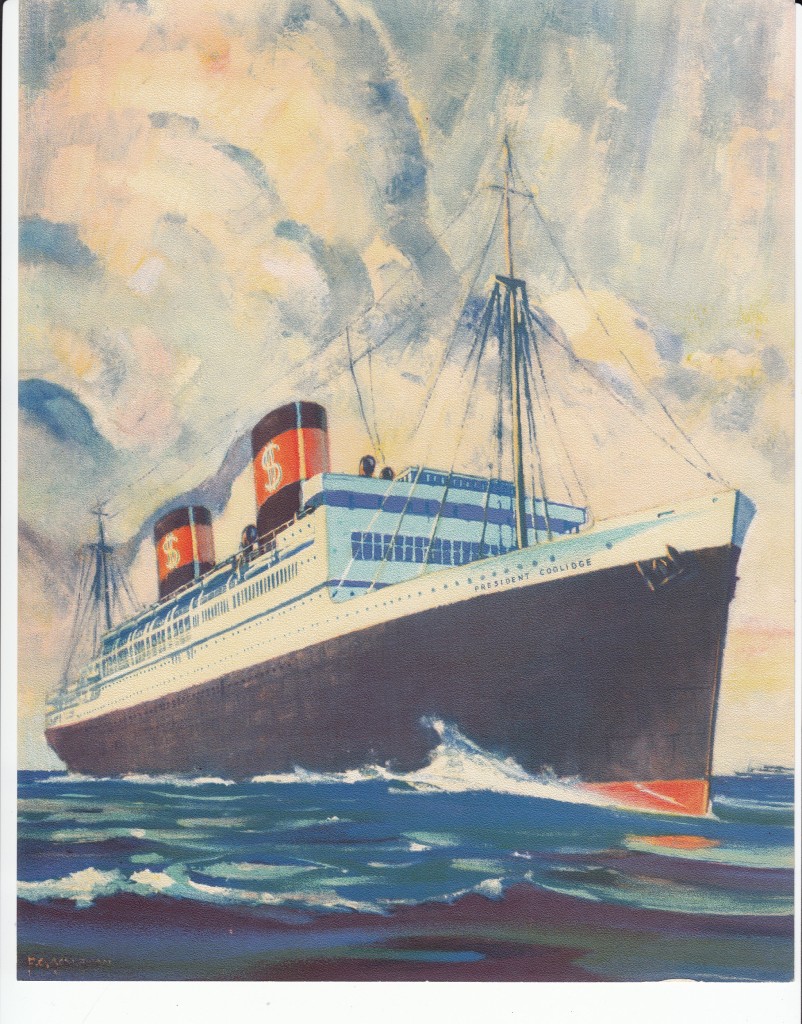Portrait of Robert Dollar, undated.
Category: Dollar Steamship Lines
Dollar Steamship Lines
At its height in the 1920s, the Dollar Steamship Company was the largest and most successful United States shipping firm, and its signature white dollar sign mounted on red-banded stacks was known around the world.
Robert Dollar (1844-1932) was the quintessential rags-to-riches millionaire – a poor immigrant who would one day dine with presidents and generals, and died one of the world’s wealthiest men. Born at Falkirk, Scotland to poverty, he immigrated to Canada in 1857. In Canada he took a job as a “chore boy” for a cook in a lumber camp. In his self-published memoirs Dollar writes of his formative years that “I always have a very kindly feeling for the place where I started work, even though it was under very adverse and the most difficult conditions, and with hardships under working conditions that are unknown to the working men of today; but I look back at those times with the feeling that it was those conditions that developed the man in me that perhaps never would have shown up if I had not been brought up in that hard school of practical experience.”
While working at the camp he began teaching himself mathematics in order to understand accounts, and French in order to understand his co-workers. At the age of 21, as Dollar recounts, he was working “as a common hand at the munificent salary of $16.00 a month” when the management of Hamilton Brothers having noted his ambition placed him in charge of affairs at a new timber operation. Now making $26.00 a month, he saved his money and began to make payments on a farm. In 1872 he started his own lumber camp, a business which soon failed leaving him with debts that he spent the next three years paying down. “I had good luck—I failed when I was young,” he told Time Magazine for a 1928 cover story commemorating his 85th birthday.
Dusting himself off from the setback, Dollar continued to pursue the lumber business and began to find success. He established operations first in Canada, then in Michigan, and finally in northern California where he settled in 1888 at San Rafael and began buying timberland and lumber camps. Dollar was now a timber magnate with one of the largest operations in the Pacific West. His move into shipping was apparently born more of frustration than ambition. The shipping services he was using to transport his lumber up and down the Pacific coast were notoriously unreliable and he was unable to make deliveries on time. In 1885 Dollar bought his first steamship to move his own lumber, a 120-foot, 300-ton steam schooner called the Newsboy. Finding success in moving his own freight, he continued to buy ships and soon had a small fleet.
In 1901, Dollar now well into his fifties incorporated the Dollar Steamship Company formally entering the steamship business. More importantly, it is at this time that he began to pursue with passion opening up trade with China. In 1902 he took the first of what would be more than 30 transpacific voyages to explore the possibility of trade. Over the next few decades he would make extensive investments in real estate in China setting up operations in such exotic locales as Shanghai, Hankow, Tientsin, and Canton. Dollar had great success with his China operations and won the respect of the business and political leaders there, his associations including presidents Li Yuen Hing and Chiang Kai-shek. It was widely known that his word alone was enough to close a multi-million dollar deal in China.
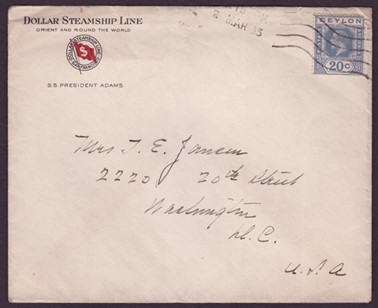
In the early 1920s, Dollar began a successful strategy of buying shares in his competitors in order to achieve controlling interests. His influence and accomplishments continued to grow. In 1920 he established a round-the-world cargo service, and in 1924 he established the first round-the-world passenger service to publish scheduled departure and arrival times. In 1925 the Dollar Steamship Company took over its chief competitor, Pacific Mail, which gave it a near-monopolistic share of U.S. Pacific coast shipping.
The late 1920s would turn out to be the peak of Dollar’s shipping fortunes. The Merchant Marine Act of 1928 established generous subsidies for carrying mail. The Act, however, had strict performance requirements and Dollar would need new ships. The company began an ambitious plan of building six luxurious ocean liners. Before the first ships rolled off the line, the onset of the Great Depression sent the global economy into chaos. Only two of the ships would be completed, the President Hoover and the President Coolidge, which famously set out on their respective maiden voyages at less than half capacity.
When Robert Dollar died in 1932 at the age of 88 he had amassed a fortune of $40,000,000, the moniker Grand Old Man of the Pacific, and a reputation for both business acumen and philanthropy. By the late 1930s the troubles that had begun in 1929 would finally bring down his empire. As Time Magazine reported in 1938, the great shipping company saddled with debt was “signed away by its crew of heirs, assignees and moneylenders” to be taken over by the U. S. Maritime Commission. The company would soon be reincarnated as American President Lines, a firm which plies the seas to this day, but nonetheless a colorful chapter in United States Maritime History was drawing to a close.

